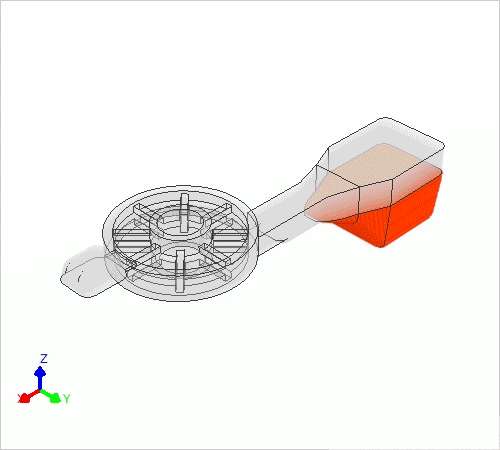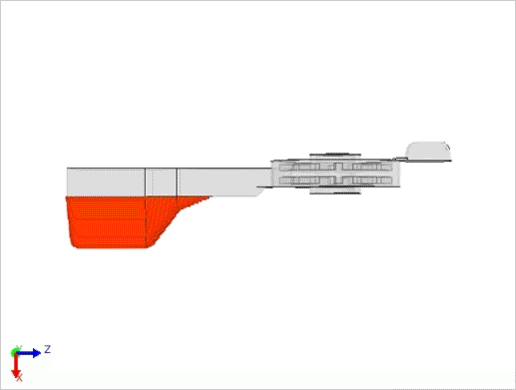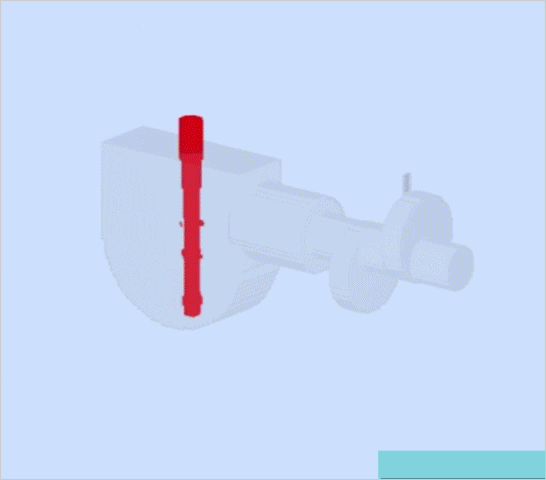Tilt casting (also known as tilt pouring) is a process that pours molten metal into a mould with gravitational force by rotating a pouring cup or a ladle. Tilt casting sometimes rotates the mould itself to fill the mould cavity with molten metal.
ADSTEFAN simulates the tilt casting process with a high degree of accuracy. While defects like shrinkage, air entrapment, and misruns in the molten metal can pose a challenge to successful castings, with ADSTEFAN, these defects can be predicted and tracked so that the casting component is optimally designed.

Casting simulation software ADSTEFAN helps tilt casting foundries and tool shops to justify their design decisions and production condition settings through its practical and affordable fluid flow analysis and solidification analysis, thereby:
The Moving Object is ADSTEFAN’s unique simulation tool that directly handles the shapes and properties of moving equipment as well as their positions, velocity, and velocity angles. This functionality is especially relevant to tilt casting as it directly handles movements of ladles, moulds, and other rigid bodies in casting simulation, which was otherwise difficult with conventional simulation algorithm. It computes the impact of these movements on fluid flow behaviours and molten metal temperature.

On some tilt castings, a ladle and a mould rotate respectively on two different axes. These two rotations upon two different axes are addressed by the Moving Object function. By considering the rotations of both the ladle and the mould, ADSTEFAN can simulate fluid flow and solidification with higher precision, as compared to other simulations without the Moving Object function.
ADSTEFAN’s efficient simulation tool benefits many industries. Especially its Moving Object function enables simulation of rotating ladles and moulds and their impacts on fluid flow and molten metal temperature.

In the automotive and many other industries, a demand for a short time-to-market has never been so fierce. For some customers, it is one of the major criteria for their sourcing decisions. For others, a quick design and introduction of casting parts signal excellent resources and capabilities which can flexibly respond to changing market needs. With ADSTEFAN, foundries can predict defect potentials on the desktop at the design stage without several rounds of physical prototyping. This means foundries can witness a considerable reduction in the development lead time with minimal quality issues to win the customers’ trust.
We are here to help you.